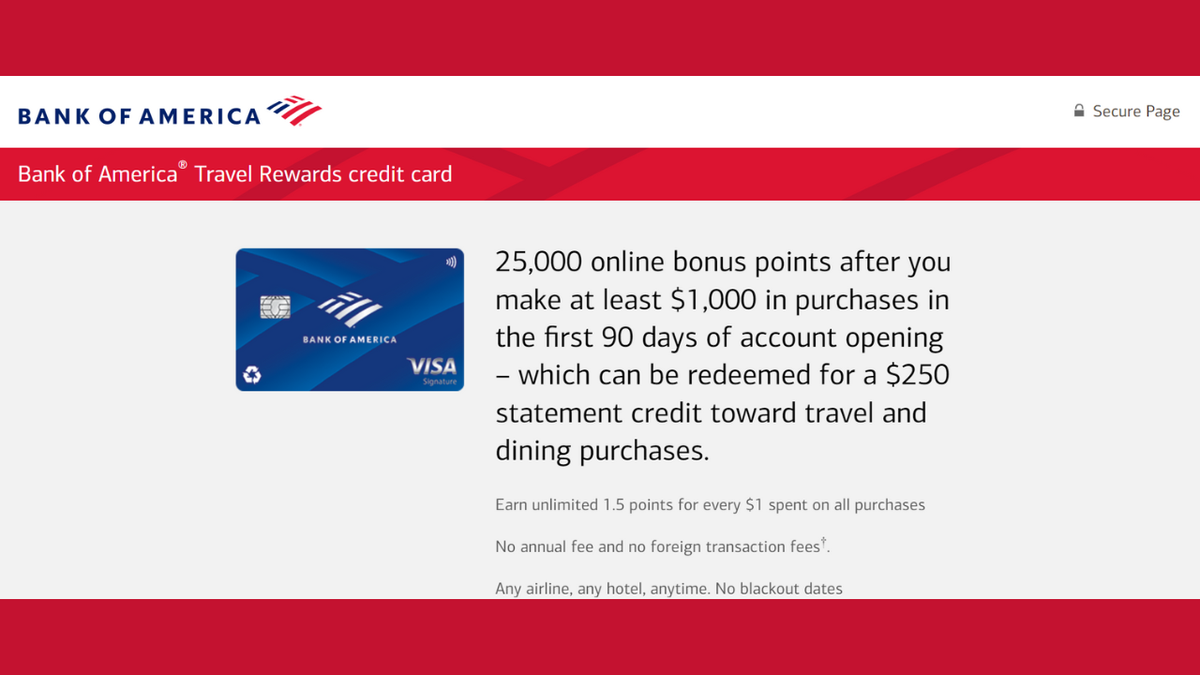Bank of America® Travel Rewards Credit Card Review: Ideal for the Avid Traveler
BoA Travel Card: Earn 1.5x points everywhere, with a $0 annual fee and a 25K bonus.

Features
- Reward Rate: Earn unlimited 1.5 points for every $1 spent on all purchases.
- Annual Fee: $0, making it cost-effective for frequent travelers.
- Welcome Bonus: Earn 25,000 bonus points after spending $1,000 in purchases within the first 90 days of account opening, equivalent to $250 in travel statement credits.
- Foreign Transaction Fees: None, which is perfect for international purchases.
- Intro APR: 0% on purchases and balance transfers for the first 15 billing cycles following the account opening.
Benefits
- Flexible Redemption Options: Points can be redeemed for travel or dining statement credits, with no blackout dates or restrictions on booking methods.
- Additional Points for Members: Bank of America Preferred Rewards members can earn 25%-75% more points on every purchase.
- Introductory APR Period: Provides breathing space for new purchases or balance transfers without interest charges.
- Contactless Payments: Enhances convenience and security with tap-to-pay technology.
Drawbacks
- High Variable APR Post-Intro: After the introductory period, the APR ranges from 18.24% to 28.24%, which could be high depending on your creditworthiness.
- Balance Transfer Fee: An introductory fee of 3% applies to balances transferred within the first 60 days, followed by a standard fee of 4%.
Product Summary
The Bank of America® Travel Rewards Credit Card offers significant value with no annual fee and a robust rewards rate of 1.5 points per dollar spent on all purchases. The card is particularly appealing due to its flexible reward redemption options and the absence of foreign transaction fees, making it ideal for travelers. Adding a generous welcome bonus and the potential for increased points through the Preferred Rewards program further enhances its value. This card is best suited for individuals who pay off their balances monthly to avoid the higher variable APR after the introductory period.
